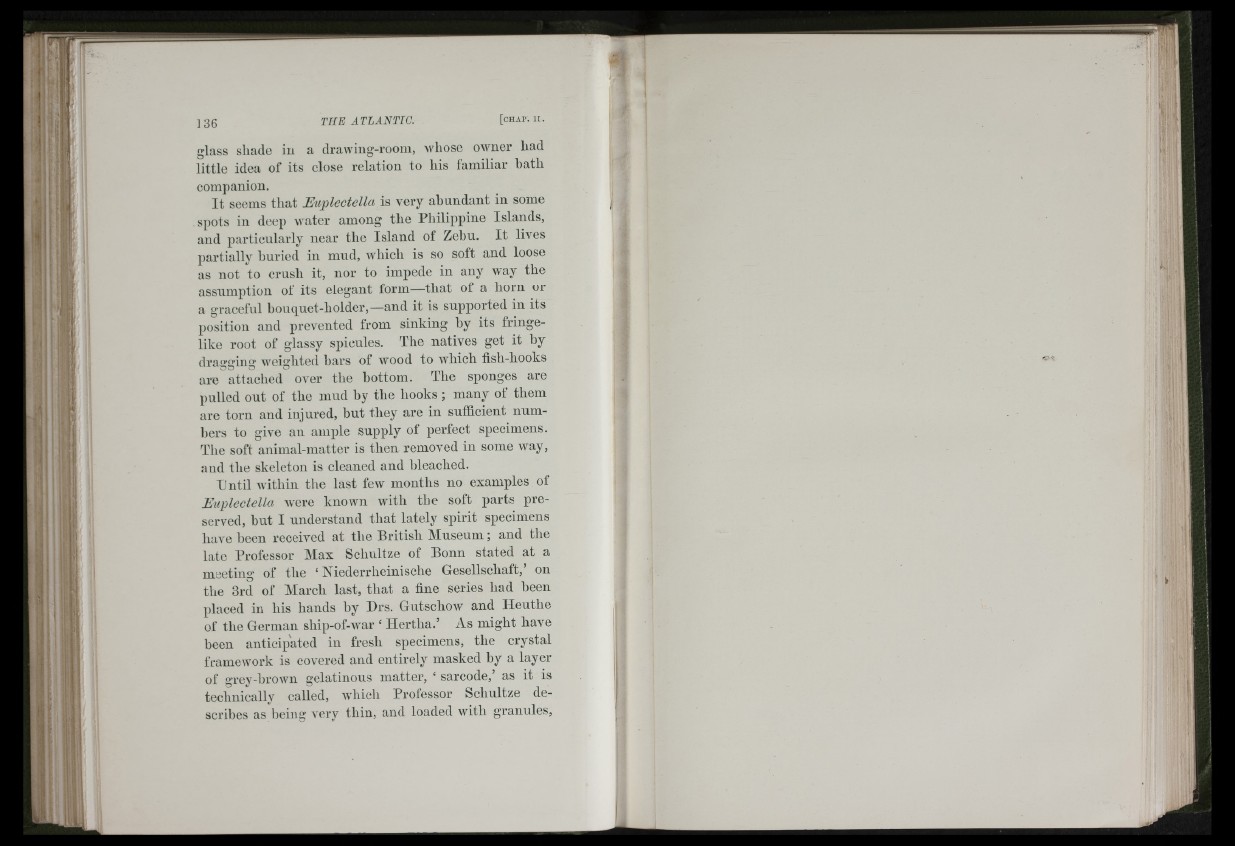
ü if
Sl:
136 THE ATLANTIC.
glass shade iu a drawing-room, whose owner had
little idea of its close relation to his familiar hath
companion.
It seems that Euplectella is very abundant in some
spots in deep water among the Philippine Islands,
and particularly near the Island of Zebu. It lives
partially buried in mud, which is so soft and loose
as not to crush it, nor to impede in any way the
assumption of its elegant form—that of a horn or
a graceful bouquet-holder,—and it is supported in its
position and prevented from sinking by its fringelike
root of glassy spicules. The natives get it by
draa'ging AA'eiglited bars of wood to which fisli-hooks
are” ached" over the bottom. The sponges are
pulled out of the mud by the hooks ; many of them
are torn and injured, but they are in sufficient numbers
to give an ample supply of perfect specimens.
The soft animal-matter is then removed in some way,
and the skeleton is cleaned and bleached.
iJntil within the last few months no examples of
Euplectella Avere known with the soft parts preserved,
but I understand that lately spirit specimens
have heen received at the British Museum; and the
late Professor Max Schnitze of Bonn stated at a
meeting of the ‘ Niederrheinische Gesellschaft,’ on
the 3rd of March last, that a fine series had been
placed in his hands by Drs. Gutschow and Heutlie
of the German ship-of-Avar ‘ Hertha.’ As might have
been anticipated in fresh specimens, the crystal
framcAvork is covered and entirely masked by a layer
of grey-hrown gelatinous matter, ‘ sarcode,’ as it is
technically called, Avhicb Prolessor Schnitze describes
as being A'cry thin, and loaded Avitli granules,
k'>
;/lv
"'A : A f f
; _ .f,
: 'k.!
’ 'Ite'
-r : rl
' "1
ill
m